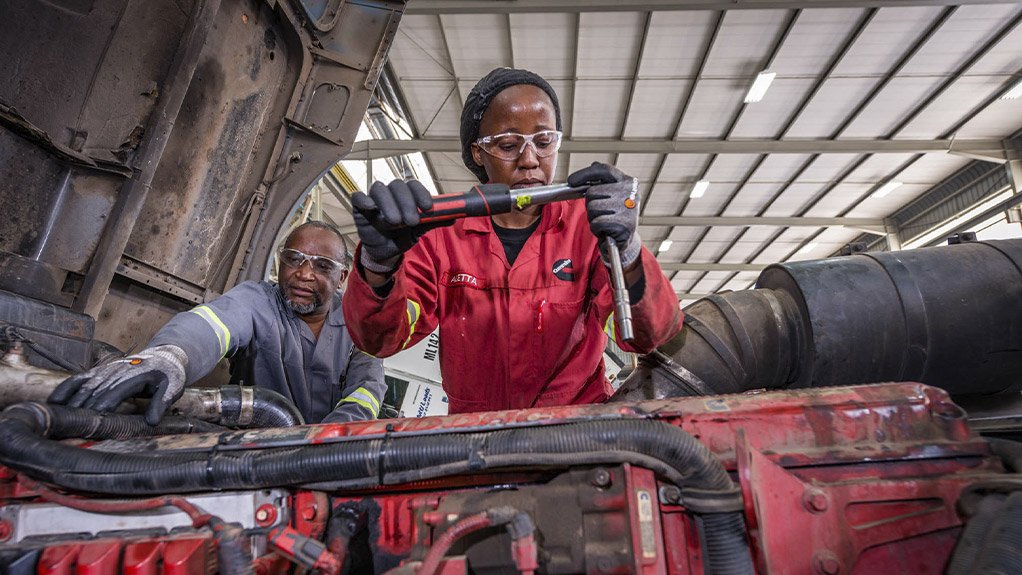Contamination mainly down to improper maintenance


MAINTENANCE CRITICAL Operating engines with contaminated oil will accelerate engine wear and significantly reduce the expected engine life
Incorrect air filter maintenance accounts for 99% of the concern that engine manufacturer Cummins has regarding engine oil contamination in Africa, says Cummins Filtration Africa and the Middle Eastengineering and technical sales support leader Raymond Liversage.
Instead of replacing air filters, maintenance technicians are cleaning them using compressed air or water and using extremely high pressures to do so.
“We don’t advocate anyone cleaning air filters, except in an emergency and at a pressure of less than 0.5 bar. However, technicians are frequently using pressures from 2.5 bar to 9 bar, damaging the filter media. This transforms an air filter into a rock separator, as small particles can now pass through the filter media,” Liversage tells Engineering News.
During the cleaning process, dust particles are also transferred from the dirty side to the clean side of the filter. Subsequently, dust enters the engine on start-up, contaminating the oil and starting the wear process in the engine.
“It is virtually impossible to avoid the entry of dust into the clean side of the air filter unless the open end of the air filter is sealed,” says the Cummins website.
Cummins Filtration technical manager mining Norbert Hilscher adds that technicians also follow inconsistent maintenance practices, extending engine maintenance beyond the specified interval period. Filters are subjected to excessive dust and the subsequent pressure build-up starts damaging the filter media, allowing for oil contamination.
“These inconsistent maintenance practices can be down to cost-cutting or mines being too focused on increasing production to undertake maintenance.”
Most mines and other end-users do not have access to on-site laboratory services and rely on outsourced laboratory services, waiting two to three weeks for the results, owing to the long distances.
Testing for contamination on site without specialised laboratory equipment is significantly difficult. Viscosity tests can be undertaken on site, with Cummins testing a sensor-based technology in Africa to measure oil viscosity. However, Liversage says viscosity tests do not provide end-users with the full picture, as only one small element of the oil is being analysed.
Cummins factory divisional field services engineer Louis Haylett says engine oil can get contaminated by external factors such as water and dust that can enter the engine when there is a missing oil filler cap and/or dipstick during normal engine operation, which lead to increased wear.
“Engine oil can also become contaminated if an engine runs beyond its specified oil maintenance interval, as it becomes contaminated by the by-products in the engine,” says Liversage, highlighting that soot is the biggest culprit of degraded engine oil.
Liversage explains that operating engines with contaminated oil will accelerate engine wear and significantly reduce the expected engine life quantified according to the load factors of specific applications.
“If engine oil has degraded, the machine needs to be stopped and the cause must be investigated to determine whether it can continue operating or requires repairs, owing to component wear.”
Using synthetic oils in combination with high sulphur content fuels, which are predominant in Africa, also leads to engine oil contamination, says Haylett, adding that each engine in the Cummins range has a preferred oil grade.
“Oils are formulated specifically for different engine technologies, with factors, such as fuel type and aftertreatment, influencing the type of oil that should be used in an engine. It is critical that the oil being used in an engine meets the performance requirements set by manufacturers such as Cummins.”
Multiple oil categories can be allowed for the same diesel engine; however, shortened oil drain intervals can be required, while diesel engines equipped with aftertreatment systems require oils with lower sulphated ash content, states Haylett.
As synthetic oils are specified for modern and emission treatment engineered engines, mineral oils are generally used in Africa where older generation engines are in use, owing to the higher sulphur content of diesel available, states Haylett.
The incorrect storage of lubricants also leads to engine oil contamination and is occasionally a problem in Africa, notes Hilscher.
“Lubricants should always be stored under roof, out of the sun and horizontally to ensure that the fluid level is always under the cap, preventing contaminants from entering the container.”
Article Enquiry
Email Article
Save Article
Feedback
To advertise email advertising@creamermedia.co.za or click here
Comments
Press Office
Announcements
What's On
Subscribe to improve your user experience...
Option 1 (equivalent of R125 a month):
Receive a weekly copy of Creamer Media's Engineering News & Mining Weekly magazine
(print copy for those in South Africa and e-magazine for those outside of South Africa)
Receive daily email newsletters
Access to full search results
Access archive of magazine back copies
Access to Projects in Progress
Access to ONE Research Report of your choice in PDF format
Option 2 (equivalent of R375 a month):
All benefits from Option 1
PLUS
Access to Creamer Media's Research Channel Africa for ALL Research Reports, in PDF format, on various industrial and mining sectors
including Electricity; Water; Energy Transition; Hydrogen; Roads, Rail and Ports; Coal; Gold; Platinum; Battery Metals; etc.
Already a subscriber?
Forgotten your password?
Receive weekly copy of Creamer Media's Engineering News & Mining Weekly magazine (print copy for those in South Africa and e-magazine for those outside of South Africa)
➕
Recieve daily email newsletters
➕
Access to full search results
➕
Access archive of magazine back copies
➕
Access to Projects in Progress
➕
Access to ONE Research Report of your choice in PDF format
RESEARCH CHANNEL AFRICA
R4500 (equivalent of R375 a month)
SUBSCRIBEAll benefits from Option 1
➕
Access to Creamer Media's Research Channel Africa for ALL Research Reports on various industrial and mining sectors, in PDF format, including on:
Electricity
➕
Water
➕
Energy Transition
➕
Hydrogen
➕
Roads, Rail and Ports
➕
Coal
➕
Gold
➕
Platinum
➕
Battery Metals
➕
etc.
Receive all benefits from Option 1 or Option 2 delivered to numerous people at your company
➕
Multiple User names and Passwords for simultaneous log-ins
➕
Intranet integration access to all in your organisation

















